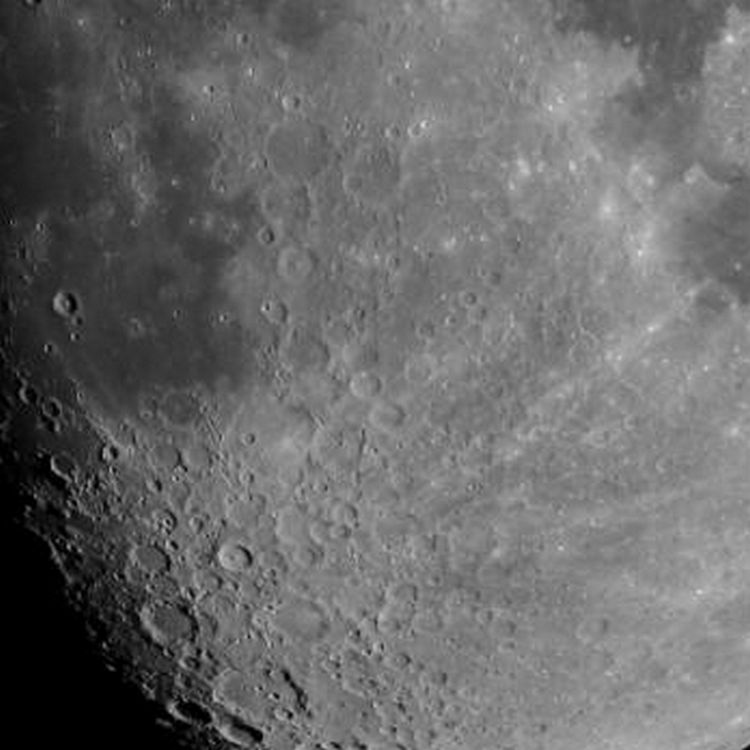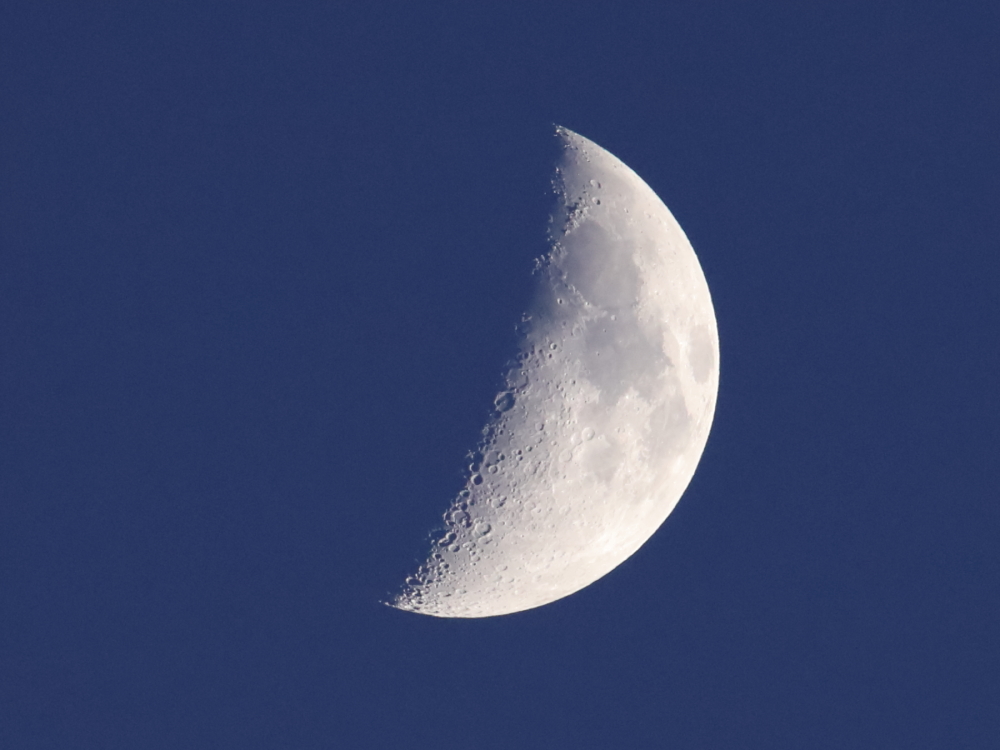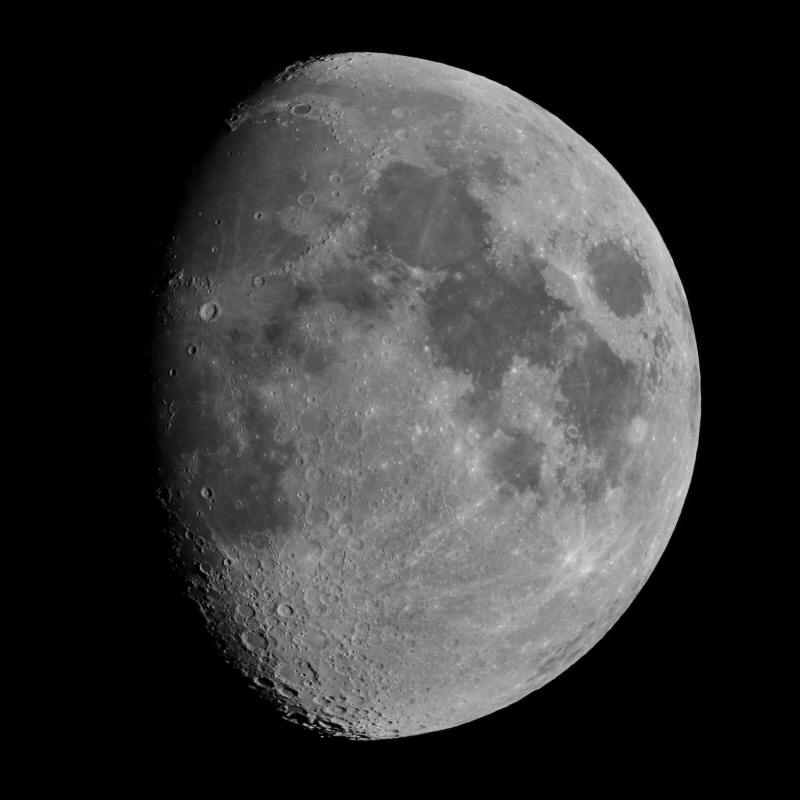The Lunar X, 2021
This image of the moon was captured on May 18, 2021, from Maple Shade, NJ. It was taken at 8:12 pm EDT (the same time as sunset) with a Canon EOS RP mirrorless digital camera and a Tamron 150 to 600 mm, f/5 to 6.3 telephoto zoom lens (set to 600 mm focal length) on a fixed tripod (here's the setup). It was exposed 1/1000 second at f/8.0, ISO 4000, daylight white balance, then mildly adjusted in Canon's Digital Photo Professional 4 and cropped to about 30% of the original linear dimensions, providing a field 1.0° wide x 0.75° high. Mouseover for labels.
I've created a page with Lunar X predictions for our area (nominally 40°N-75°W) on July 16, 2021. Dave Mitsky provides predictions in his monthly calendar linked at the DVAA web site. Phil Harrington's predictions for 2018 to 2023 are tabulated here.
The Lunar X, 2009
This is the full-frame image as it came from the camera on March 3, 2009. It's a 3888 x 2592 pixel array that was reduced to 800 x 533 for this web page. No other processing was applied. It was taken at 6:26 pm EST from Maple Shade, NJ, with a Canon 40D digital SLR at the 480 mm prime focus of a William Optics 80 mm, f/6 apo refractor on a fixed tripod. Manually exposed 1/320 second at ISO 400 with daylight white balance. Scroll down to zoom in on the "X". For an nice page on this feature, see Jerry Lodriguss' page at Catching the Light. His picture was was the APOD for March 11, 2009. Additionally, here's an RASC article about the Lunar X.
This is the same image cropped to 1000 x 900, then spread to the same width as the picture above. The "X" is visible on the terminator, about one-third of the way from the bottom-left (south) to the upper-right (north). Mouseover for label. Scroll down to zoom more.
The is same image again, but cropped to 300 x 300 and spread to 75% of the width of the images above. The "X" is self-evident just left of center. Visually, the "X" could also be located with the 80 mm scope and a 40 mm eyepiece (12x), but it showed well with my 16 mm Nagler (30x) and 10 mm Radian (48x) eyepieces. I could also spot it with 16x70 Fujinon binoculars (after bracing them against a telephone pole).
The Lunar X, 2018
Fully Illuminated
Here's a single frame snapshot of the gibbous moon taken at 10:46 pm EDT on May 24, 2018 (3 days after first quarter at 11:49 pm on May 21, 2018), with a Canon 7D Mk II digital SLR camera at the 910 mm prime focus of a Stellarvue 130 mm, f/7 apo refractor. It was exposed 1/1000 second at ISO 400, then converted to monochrome and cropped to about a third of the sensor's area yielding a field about 0.6° square. I noticed that when examined closely, the Lunar X was visible, although not nearly as prominent as when it appears as a highlight at the terminator. Mouseover for a label.

Here's an enlarging crop of the image above to better show the "X" (mouseover for a label). Unfortunately, as of this supplementary addition to the Lunar X page on 15-February-2021, I do not have ready access to the original image for a better cropped view (as opposed to this cropping of an already-cropped and resized image, although the 130 mm Stellarvue apo refractor provided enough detail to endure it reasonably well).

